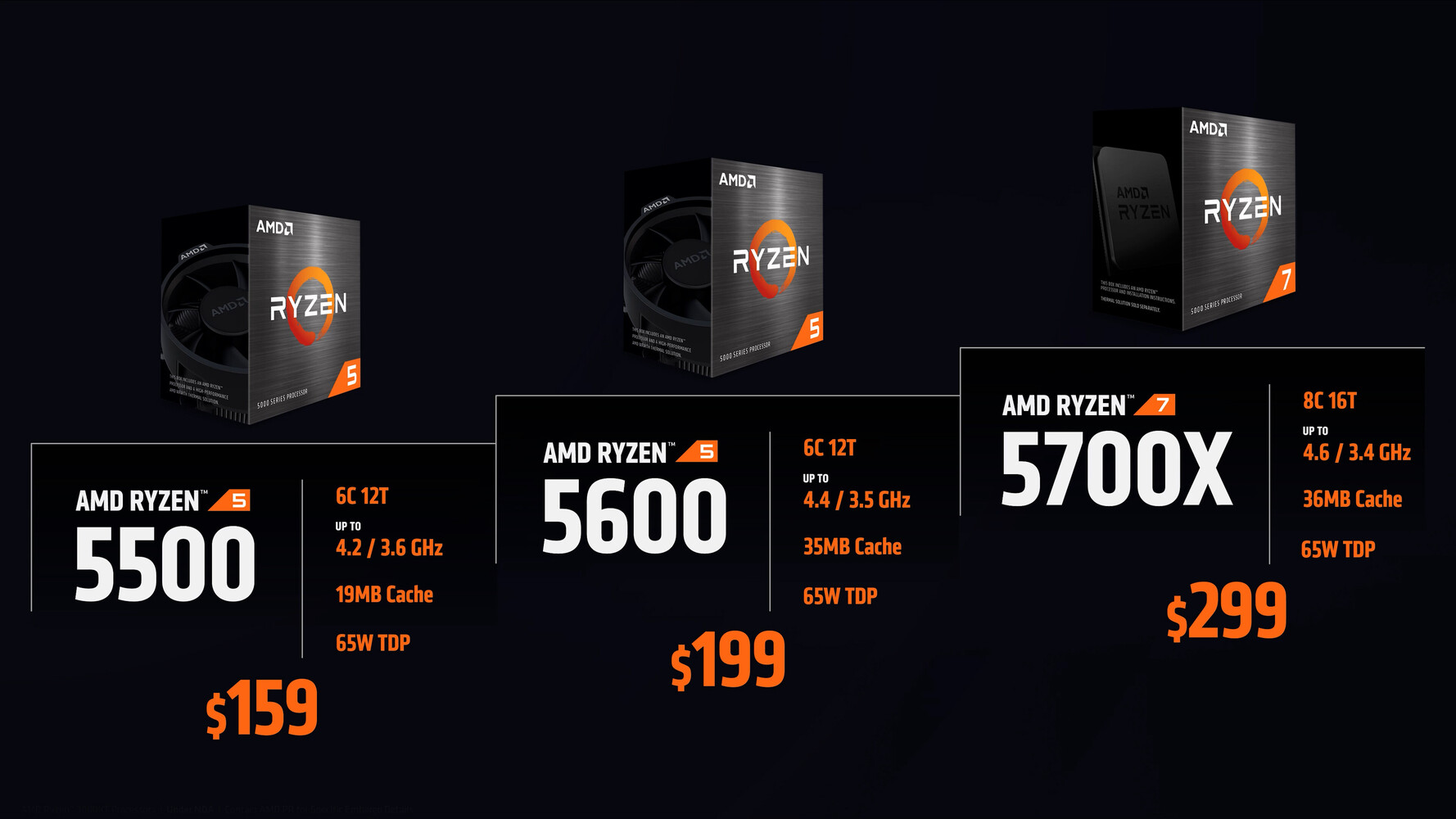TheLostSwede
News Editor
- Joined
- Nov 11, 2004
- Messages
- 17,622 (2.41/day)
- Location
- Sweden
| System Name | Overlord Mk MLI |
|---|---|
| Processor | AMD Ryzen 7 7800X3D |
| Motherboard | Gigabyte X670E Aorus Master |
| Cooling | Noctua NH-D15 SE with offsets |
| Memory | 32GB Team T-Create Expert DDR5 6000 MHz @ CL30-34-34-68 |
| Video Card(s) | Gainward GeForce RTX 4080 Phantom GS |
| Storage | 1TB Solidigm P44 Pro, 2 TB Corsair MP600 Pro, 2TB Kingston KC3000 |
| Display(s) | Acer XV272K LVbmiipruzx 4K@160Hz |
| Case | Fractal Design Torrent Compact |
| Audio Device(s) | Corsair Virtuoso SE |
| Power Supply | be quiet! Pure Power 12 M 850 W |
| Mouse | Logitech G502 Lightspeed |
| Keyboard | Corsair K70 Max |
| Software | Windows 10 Pro |
| Benchmark Scores | https://valid.x86.fr/yfsd9w |
In a livestream talking about AMD's mobile CPUs with HotHardware, Robert Hallock shone some light on the rumours about the Ryzen 7 5800X3D lacking manual overclocking. As per earlier rumours, something TechPowerUp! confirmed with our own sources, AMD's Ryzen 7 5800X3D lacks support for manual CPU overclocking and AMD asked its motherboard partners to remove these features in the UEFI. According to the livestream, these CPUs are said to be hard locked, so there's no workaround when it comes to adjusting the CPU multiplier or Voltage, but at least AMD has a good reason for it.
It turns out that the 3D V-Cache is Voltage limited to a maximum of 1.3 to 1.35 Volts, which means that the regular boost Voltage of individual Ryzen CPU cores, which can hit 1.45 to 1.5 Volts, would be too high for the 3D V-Cache to handle. As such, AMD implemented the restrictions for this CPU. However, the Infinity Fabric and memory bus can still be manually overclocked. The lower Voltage boost also helps explain why the Ryzen 7 5800X3D has lower boost clocks, as it's possible that the higher Voltages are needed to hit the higher frequencies.

That said, Robert Hallock made a point of mentioning that overclocking is a priority for AMD and the Ryzen 7 5800X3D is a one off when it comes to these limitations. The reason behind this is that AMD is limited by the manufacturing technology available to the company today, but it wanted to release the technology to consumers now, rather than wait until the next generation of CPUs. In other words, this is not a change in AMD's business model, as future CPUs from AMD will include overclocking.
Hallock also explained why AMD didn't go with more cores for its first 3D V-Cache CPU and it has to do with the fact that most workloads outside of gaming don't reap much of a benefit. This is large due to how different applications use cache memory and when it comes to games, a lot of the data is being reused, which is a perfect scenario for a large cache, whereas something like video editing software, can't take advantage of a large cache in the same way. This means that AMD's secret to boosting the performance in games is that more game data ends up sitting closer to the CPU, which results in a 12 ns latency for the CPU to retrieve that data from the L3 cache, compared to 60-80 ns when the data has to be fetched from RAM. Add to this the higher bandwidth of the cache and it makes sense how the extra cache helps boost the performance in games.
For more details, please see video below. The interesting part starts around the 45:30 mark.
View at TechPowerUp Main Site
It turns out that the 3D V-Cache is Voltage limited to a maximum of 1.3 to 1.35 Volts, which means that the regular boost Voltage of individual Ryzen CPU cores, which can hit 1.45 to 1.5 Volts, would be too high for the 3D V-Cache to handle. As such, AMD implemented the restrictions for this CPU. However, the Infinity Fabric and memory bus can still be manually overclocked. The lower Voltage boost also helps explain why the Ryzen 7 5800X3D has lower boost clocks, as it's possible that the higher Voltages are needed to hit the higher frequencies.

That said, Robert Hallock made a point of mentioning that overclocking is a priority for AMD and the Ryzen 7 5800X3D is a one off when it comes to these limitations. The reason behind this is that AMD is limited by the manufacturing technology available to the company today, but it wanted to release the technology to consumers now, rather than wait until the next generation of CPUs. In other words, this is not a change in AMD's business model, as future CPUs from AMD will include overclocking.
Hallock also explained why AMD didn't go with more cores for its first 3D V-Cache CPU and it has to do with the fact that most workloads outside of gaming don't reap much of a benefit. This is large due to how different applications use cache memory and when it comes to games, a lot of the data is being reused, which is a perfect scenario for a large cache, whereas something like video editing software, can't take advantage of a large cache in the same way. This means that AMD's secret to boosting the performance in games is that more game data ends up sitting closer to the CPU, which results in a 12 ns latency for the CPU to retrieve that data from the L3 cache, compared to 60-80 ns when the data has to be fetched from RAM. Add to this the higher bandwidth of the cache and it makes sense how the extra cache helps boost the performance in games.
For more details, please see video below. The interesting part starts around the 45:30 mark.
View at TechPowerUp Main Site






